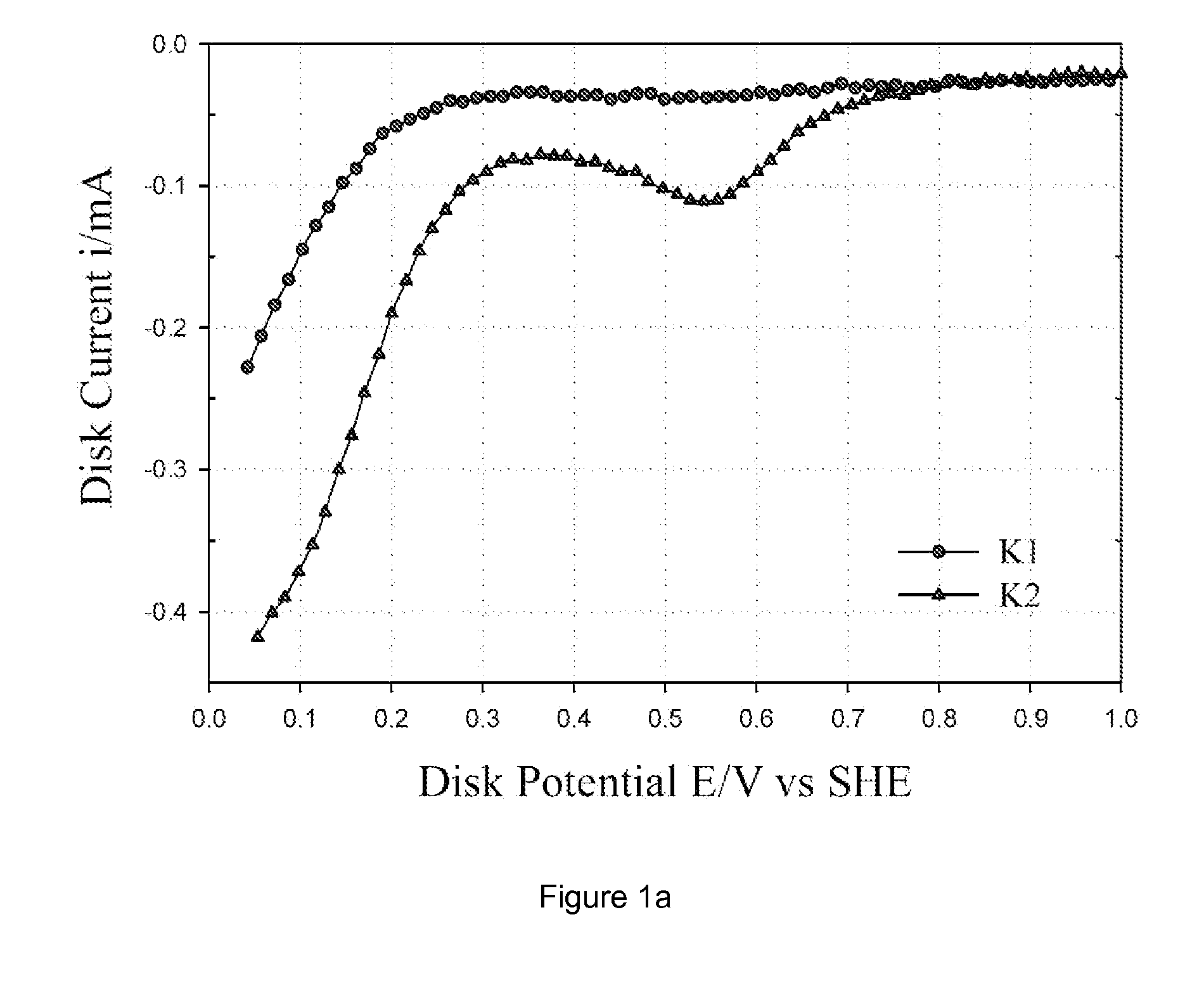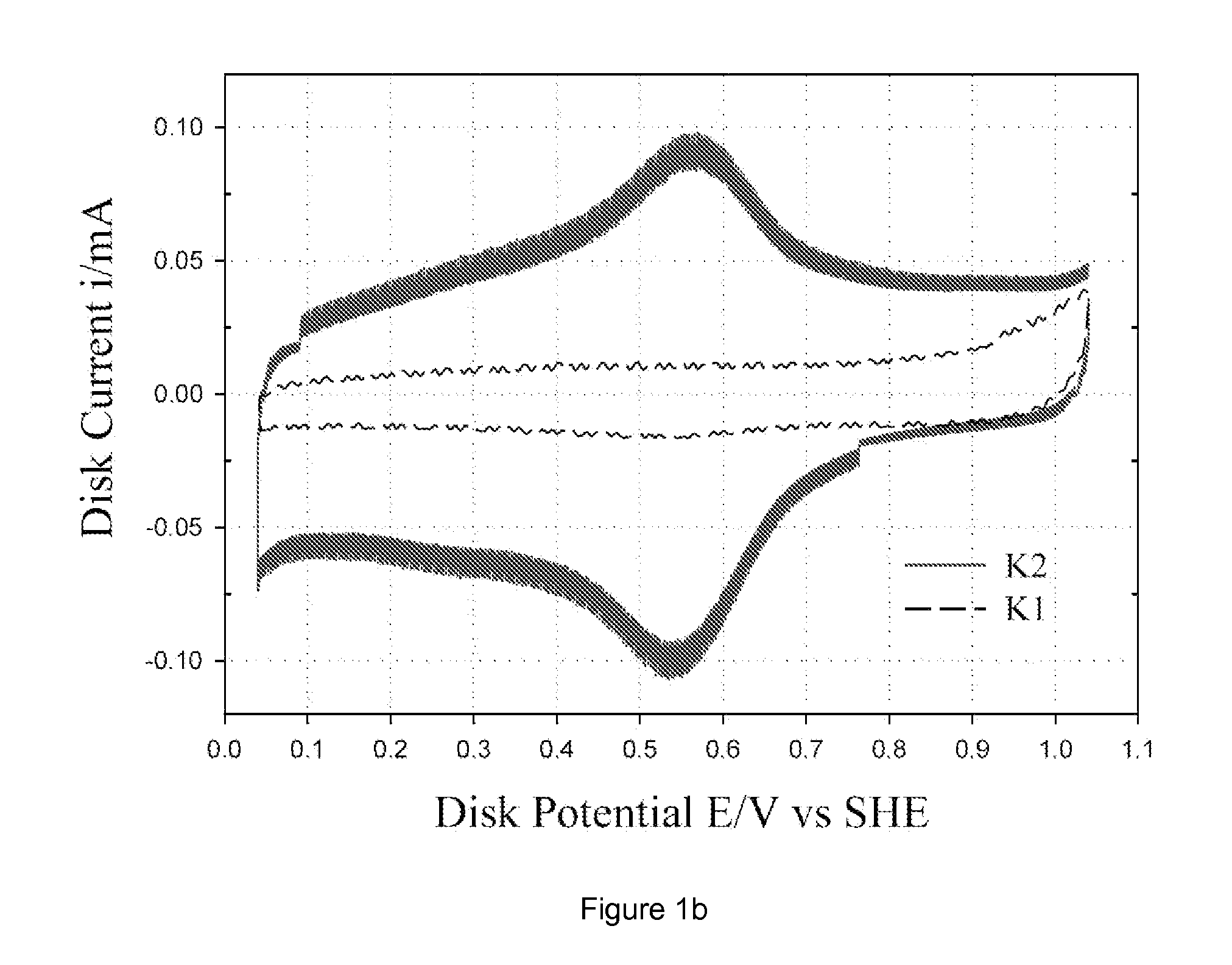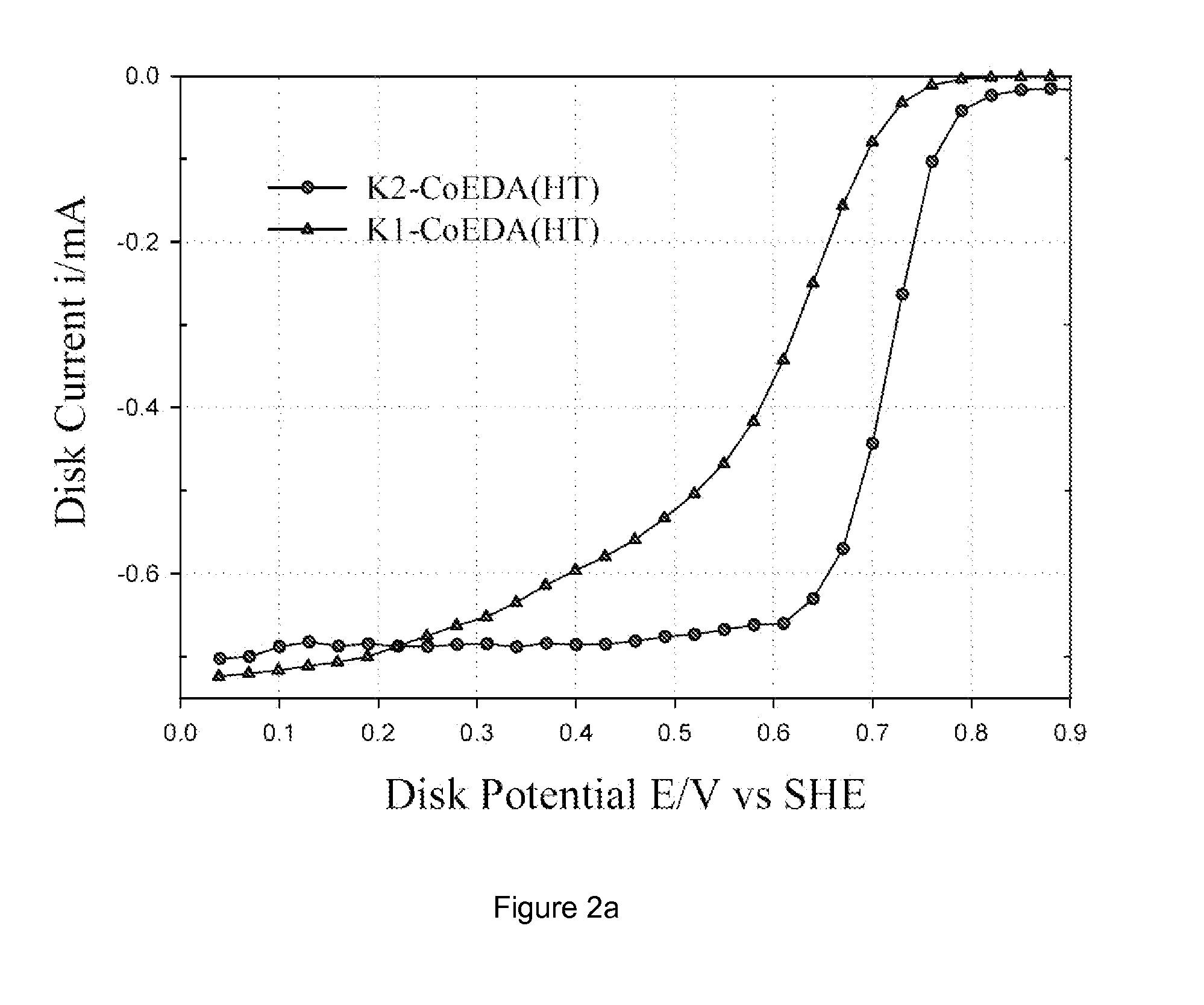Composite catalysts supported on modified carbon substrates and methods of making the same
- Summary
- Abstract
- Description
- Claims
- Application Information
AI Technical Summary
Problems solved by technology
Method used
Image
Examples
examples
A1: Catalyst Preparation
[0033] Commercially available carbon blacks, namely Ketjen Black EC 300 J, Vulcan XC-72 and Black Pearl 2000, were pre-washed with 6 M HCl to dematerialize the carbon of any metal impurities. This carbon was then washed in distilled water to remove any chloride impurities. The pre-washed carbon was subjected to oxidation in 70% HNO3 for 7 h under reflux and then washed in distilled water, followed by drying in an oven at 75° C. to obtain oxidized carbon. For brevity, as received Ketjen Black EC 300J, Vulcan XC-72 and Black Pearl 2000 are denoted as K, V, and B; HCl treated carbons as K1, V1 and B1; and HNO3 treated carbons as K2, V2 and B2. Both oxidized carbon (e.g., K2) and un-oxidized carbon (e.g., K1) were loaded with Co-chelate complex (denoted as CoEDA). The CoEDA (Cobalt ethylene diamine) chelate gives rise to the simplest MN4 structure among the chelates studied. This complex was synthesized by adding stoichiometric amounts of ethylene diamine to cob...
PUM
| Property | Measurement | Unit |
|---|---|---|
| Temperature | aaaaa | aaaaa |
| Structure | aaaaa | aaaaa |
Abstract
Description
Claims
Application Information
 Login to View More
Login to View More - R&D
- Intellectual Property
- Life Sciences
- Materials
- Tech Scout
- Unparalleled Data Quality
- Higher Quality Content
- 60% Fewer Hallucinations
Browse by: Latest US Patents, China's latest patents, Technical Efficacy Thesaurus, Application Domain, Technology Topic, Popular Technical Reports.
© 2025 PatSnap. All rights reserved.Legal|Privacy policy|Modern Slavery Act Transparency Statement|Sitemap|About US| Contact US: help@patsnap.com



